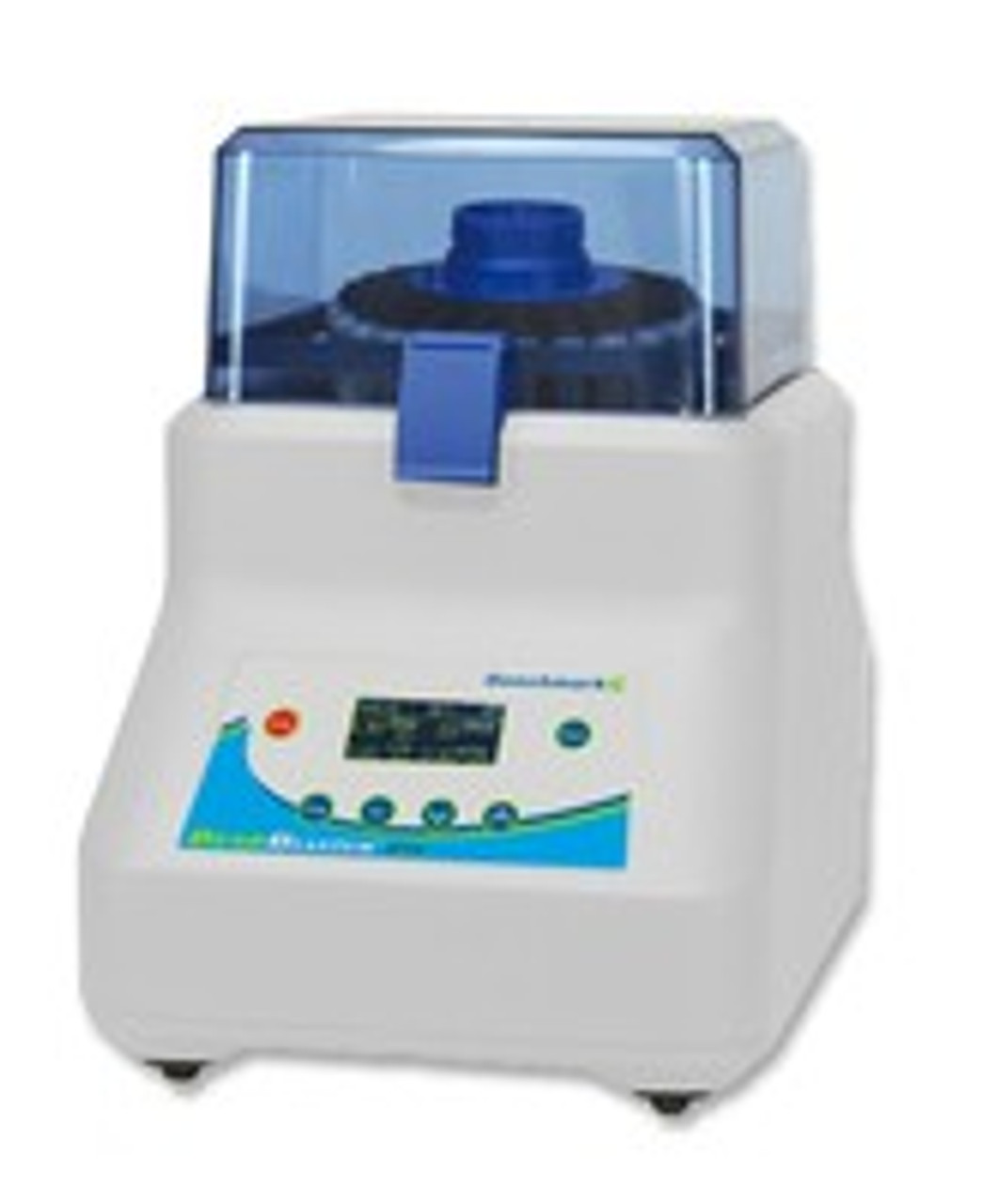According to the dictionary, the most precise definition of “homogenize” means:
“to prepare an emulsion, as by reducing the size of the fat globules in (milk or cream) in order to distribute them equally throughout”
More broadly speaking, in laboratory applications it refers to breaking apart material (soil, tissue, bone, plant matter, etc) in preparation for further analytical study.
A lab homogenizer could be something as simple as the ancient mortar and pestle, to more sophisticated ultrasonic devices that shatter with the power of sound waves.
According to a recent (Dec. 2015) survey published by Lab Manager magazine, the two most common laboratory tools for homogenizing are the rotor-stator at 57%, and ultrasonic units at 37%.
The former may be hand-held or mounted, and works similarly to a common drill.

Bits are attached to the motorized end and inserted into a conical tube or other vessel where the blades spin and liquefy hard substances so that their DNA and other components can be extracted.
A distant third (16%), but frequently requested, are what are called bead-mill homogenizers.
To use a bead-mill, the research technician loads a sample into a pre-filled tube that contains very hard chemically-inert beads, often made of garnet, stainless steel or zirconium. The tube is then inserted into a device that places the sample/bead combination into motion to break apart the sample with repeated violent collisions. This liquefied by-product is then poured off with the beads left behind.
One advantage of the bead-mill homogenizer over hand-held homogenizers is the ability to contain the sample during processing with no aerosols escaping and no risk of liquid splattering and contributing to cross-contamination of other samples.
Additionally, the “drill bits” (called generators) that are used with a hand-held homogenizer tend to be very expensive and need to be replaced each time a new sample is ground up. Comparatively, pre-filled bead tubes come in packs of fifty and cost just a few dollars apiece.
Among the many important considerations when selecting a bead homogenizer are:
- 1. Capacity – how many samples may be processed (lysed) at a single time?
- 2. Method of disruption – Are the samples broken apart by striking the tube externally (more prone to breakage) or by vibrating a secured tube?
- 3. Duration between intervals – How long must the unit cool before it can be used again?
- 4. How is temperature maintained? – Homogenization must be rapid and not produce a temperature increase so as to minimize changing critical characteristics.
Stellar Scientific offers you a choice of two excellent bead homogenizer options.
The adorable BeadBug is appropriately named on account of the whimsical detailing that makes this compact homogenizer look like a scaled down version of the re-released VW Beetle (you can even spot the signature round headlights!).

The Beadbug holds a maximum of three 2.0mL tubes for small-scale homogenization. Tissue and other samples are typically homogenized in about thirty-seconds or less.
For labs that require much higher through-put, the Benchmark BeadBlaster 24 is an all-around exceptional choice.

With a capacity of 24 x 2.0mL tubes and a richly featured, digital control system, the BeadBlaster 24 offers incredible value and performance.
Better priced than its closest competitors and capable of protecting heat-sensitive samples with a unique “short-burst” interval step.
Whatever your needs, Stellar Scientific has a homogenizer for you. Call us for a free demo!


